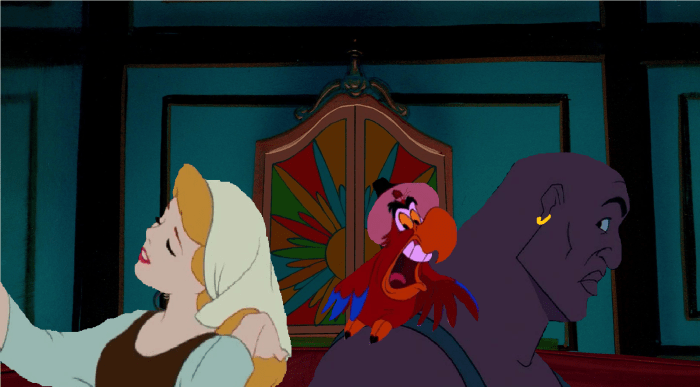Beware my lord of jealousy speaker, for jealousy is a venomous serpent that can poison the sweetest of hearts. Throughout history and across cultures, jealousy has been a recurring theme in literature, art, and interpersonal relationships, leaving an indelible mark on the human psyche.
In this discourse, we delve into the treacherous realm of jealousy, exploring its devastating impact on individuals and societies alike. We will examine the psychological and emotional underpinnings of jealousy, its role as a destructive force in relationships, and the coping mechanisms that can help us navigate its treacherous waters.
Definition and Context: Beware My Lord Of Jealousy Speaker

The phrase “beware my lord of jealousy” serves as a warning against the destructive nature of jealousy. It is believed to have originated from the Elizabethan era, where it was commonly used in plays and literature to convey the intense emotions and consequences associated with jealousy.
In Shakespeare’s “Othello,” the character of Iago uses the phrase to manipulate Othello into believing that his wife, Desdemona, is unfaithful. This highlights the manipulative and dangerous potential of jealousy, which can lead to suspicion, mistrust, and even violence.
Jealousy as a Literary Theme
Jealousy has been a prevalent theme in literature throughout history. It has been explored in works by renowned authors such as William Shakespeare, Jane Austen, and Leo Tolstoy.
In classic literature, jealousy is often portrayed as a destructive force that can corrupt individuals and drive them to irrational actions. It can lead to betrayal, murder, and other tragic outcomes.
Authors have also used jealousy to explore the psychological and emotional aspects of human nature. They have examined the feelings of insecurity, possessiveness, and suspicion that can accompany jealousy, providing insights into the complexities of human relationships.
Jealousy in Relationships
Jealousy is a common emotion experienced in romantic and interpersonal relationships. It can arise from feelings of insecurity, fear of abandonment, or perceived threats to the relationship.
There are different types of jealousy, including romantic jealousy, sexual jealousy, and emotional jealousy. Each type stems from specific triggers and can manifest in varying degrees of intensity.
Jealousy can have a significant impact on relationships. It can lead to conflict, mistrust, and even the breakdown of the relationship. However, it can also be an opportunity for growth and strengthening the bond between partners if addressed in a healthy manner.
Social and Cultural Influences on Jealousy
Social and cultural norms shape our understanding of jealousy. Different cultures have varying degrees of tolerance for jealousy, and the expression and interpretation of jealousy can vary depending on gender, race, and class.
In some cultures, jealousy is viewed as a sign of passion and love, while in others, it is considered a negative emotion that should be suppressed. Societal pressures can influence how individuals experience and express jealousy.
For example, in cultures that emphasize honor and reputation, jealousy may be seen as a way to protect one’s status and social standing. In contrast, in cultures that prioritize individualism and personal freedom, jealousy may be seen as a threat to autonomy and self-expression.
Coping with Jealousy

Jealousy can be a challenging emotion to manage. However, there are strategies that individuals can employ to cope with jealousy in a healthy way.
Self-awareness is crucial in addressing jealousy. Understanding one’s triggers and recognizing the underlying causes of jealousy can help individuals develop strategies for managing it effectively.
Communication is also essential in healthy relationships. Open and honest communication between partners can help address feelings of jealousy, reduce misunderstandings, and strengthen the bond between them.
Building trust is another important aspect of coping with jealousy. Establishing a foundation of trust through consistent behavior and open communication can help reduce feelings of insecurity and jealousy.
Artistic Representations of Jealousy
Jealousy has been a common subject in art throughout history. It has been depicted in various forms, including painting, sculpture, and music.
Artists have used symbolism and techniques to convey the emotions and consequences of jealousy. For instance, the color green has often been associated with jealousy, representing envy and resentment.
Artistic representations of jealousy can evoke empathy and understanding. They provide a visual and emotional interpretation of the complex and often destructive nature of this emotion.
FAQ Overview
What is the significance of the phrase “beware my lord of jealousy speaker”?
The phrase “beware my lord of jealousy speaker” serves as a cautionary warning against the destructive power of jealousy. It emphasizes the importance of being vigilant and guarding against the insidious nature of this emotion.
How does jealousy manifest itself in literature?
In literature, jealousy is often portrayed as a destructive force that can lead to betrayal, murder, and other tragic outcomes. It is a common theme in classic works, such as Shakespeare’s Othello and Emily Brontë’s Wuthering Heights.
What are some effective strategies for coping with jealousy?
Effective strategies for coping with jealousy include self-awareness, communication, and trust-building. It is important to recognize and acknowledge our jealous feelings, communicate them to our partners in a healthy way, and work together to address the underlying causes.
